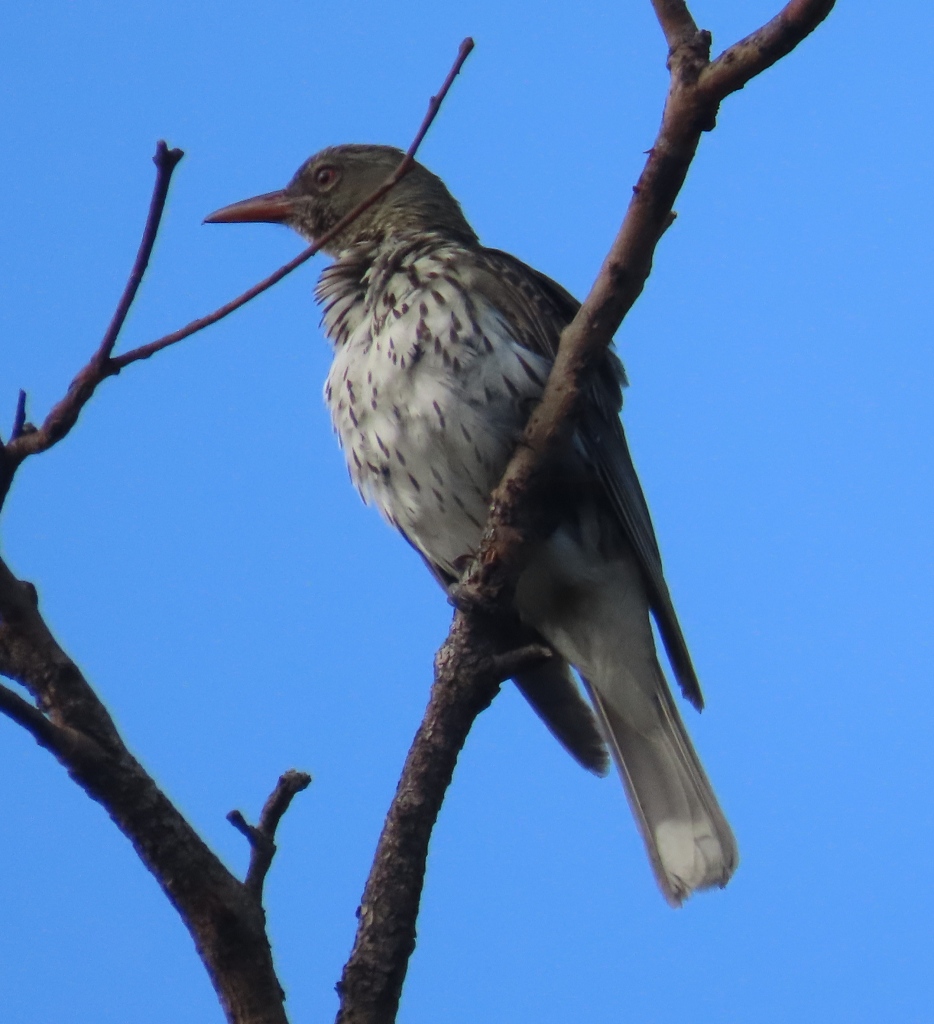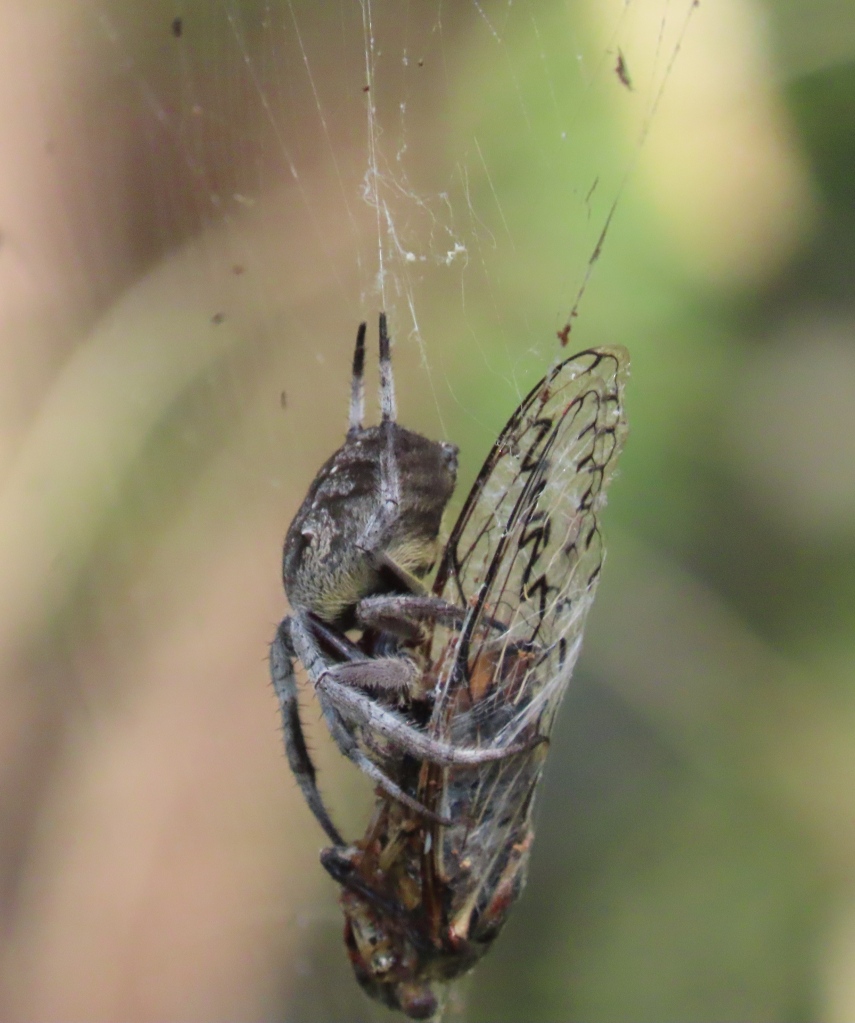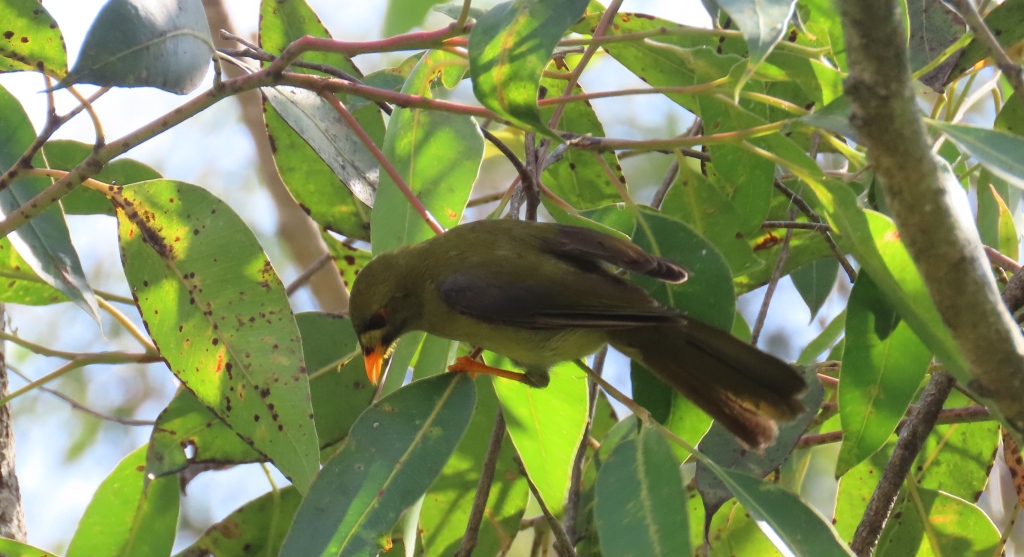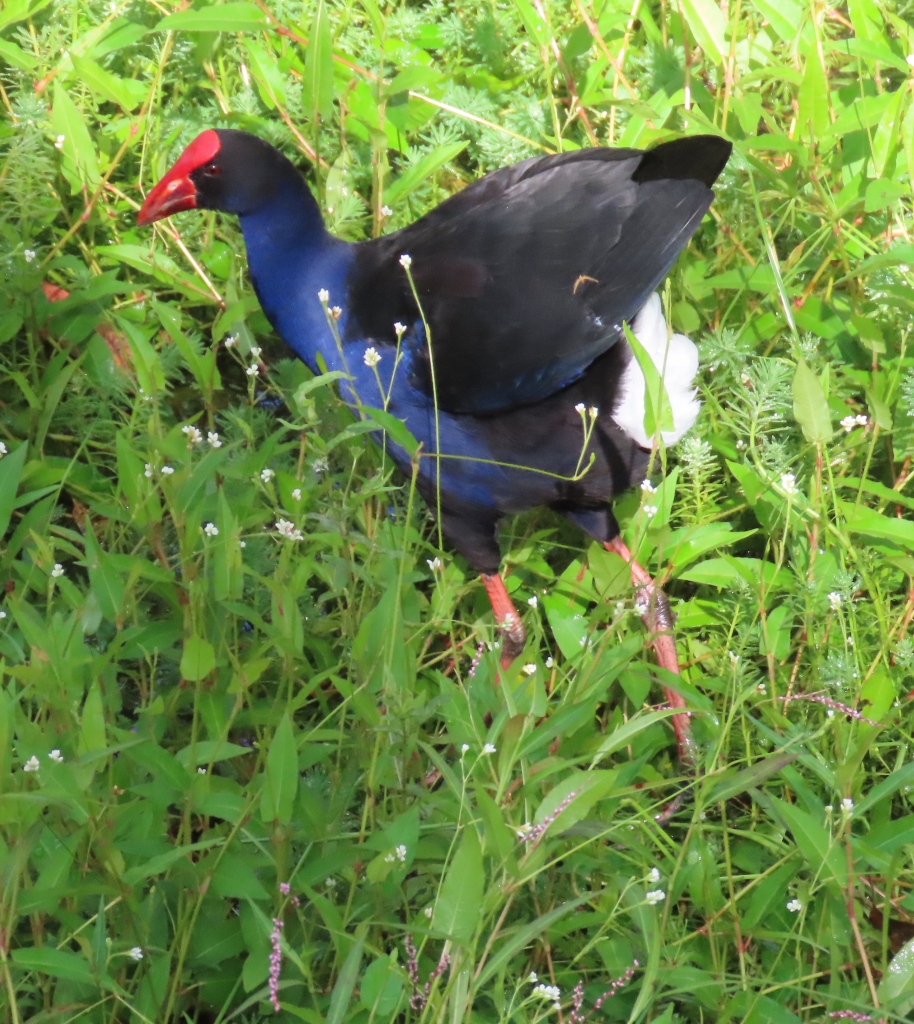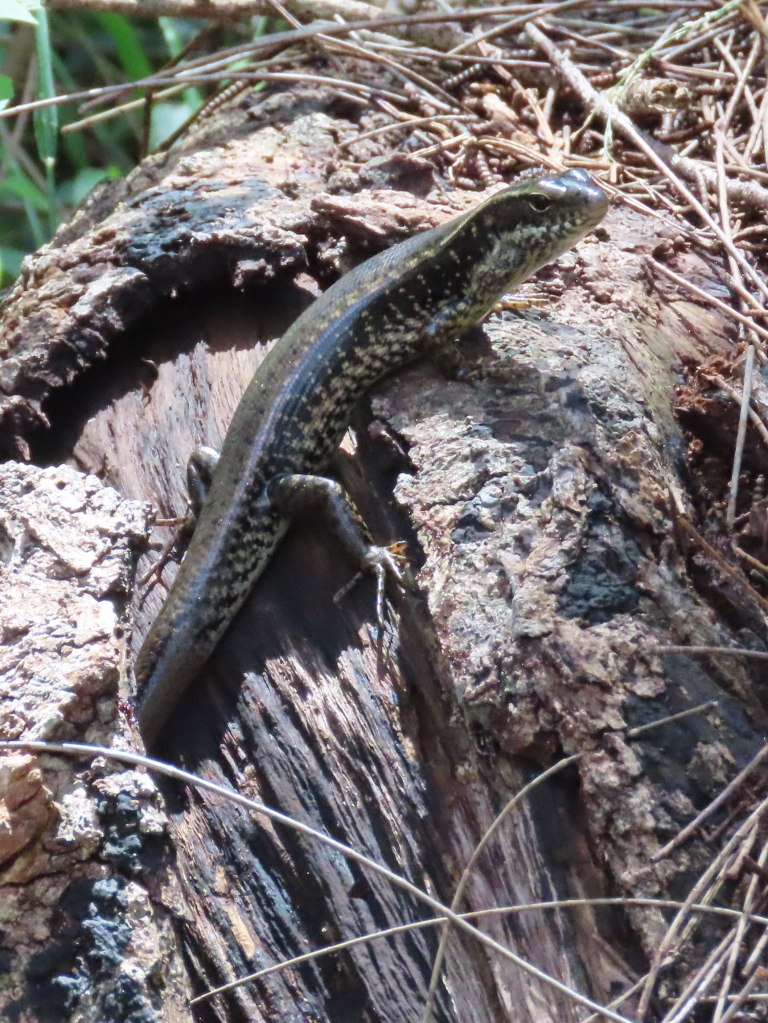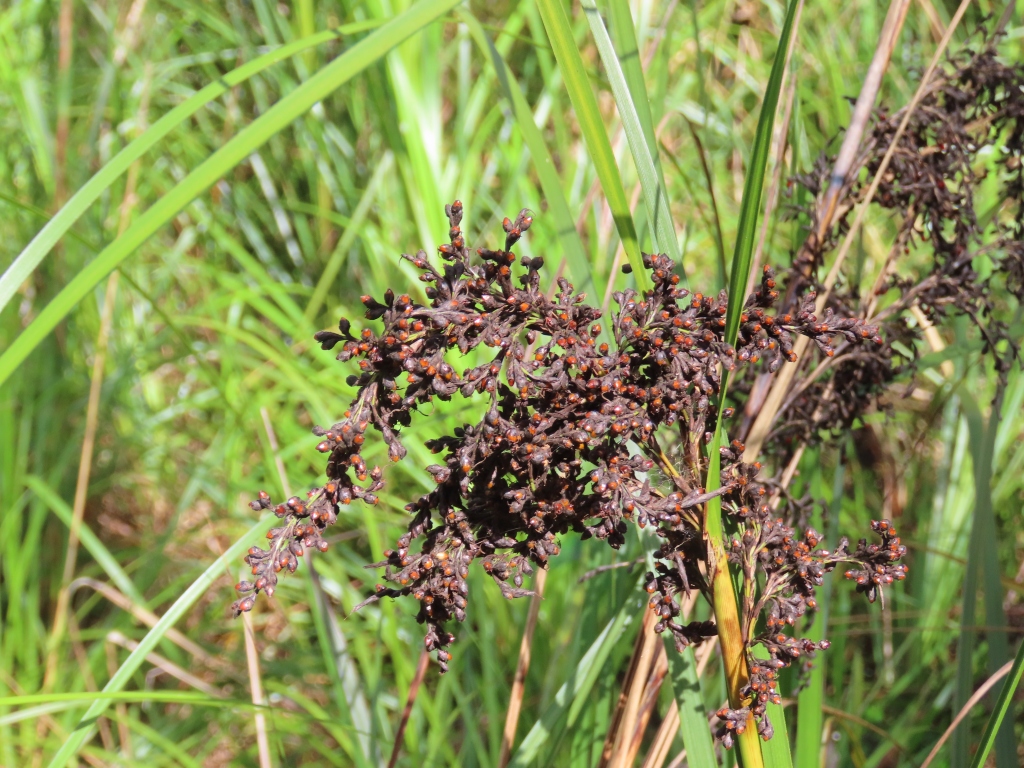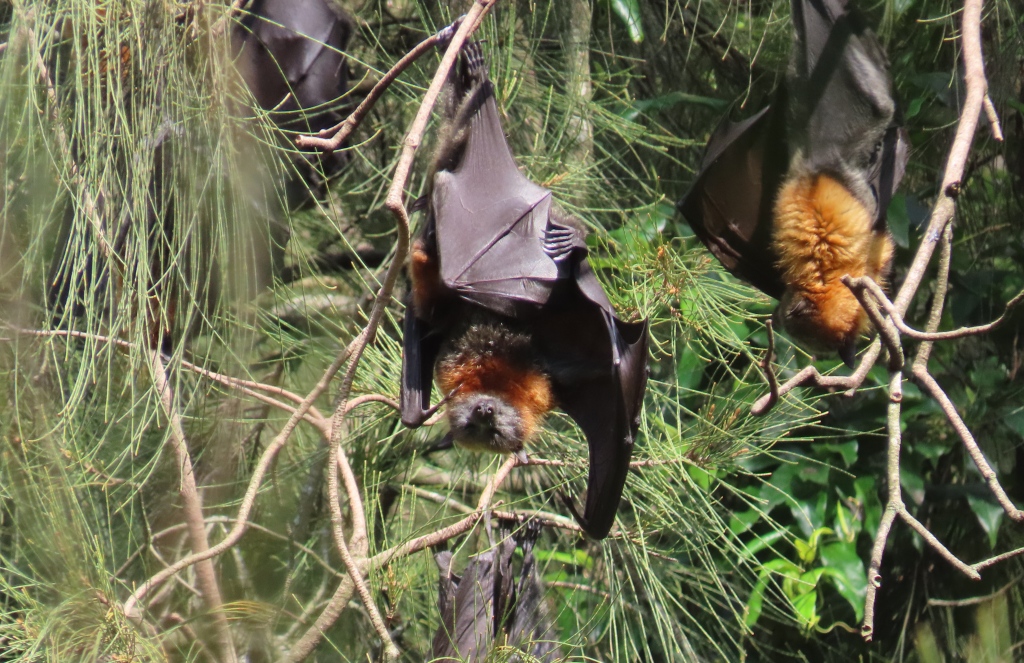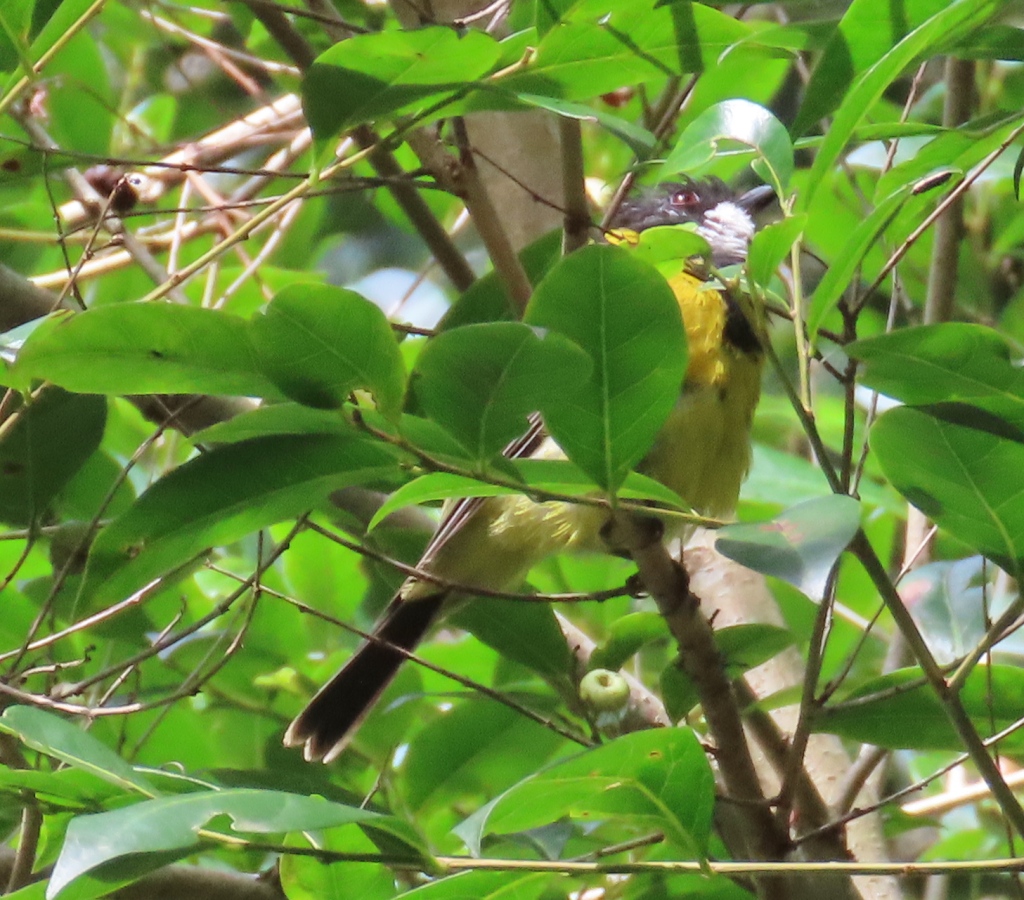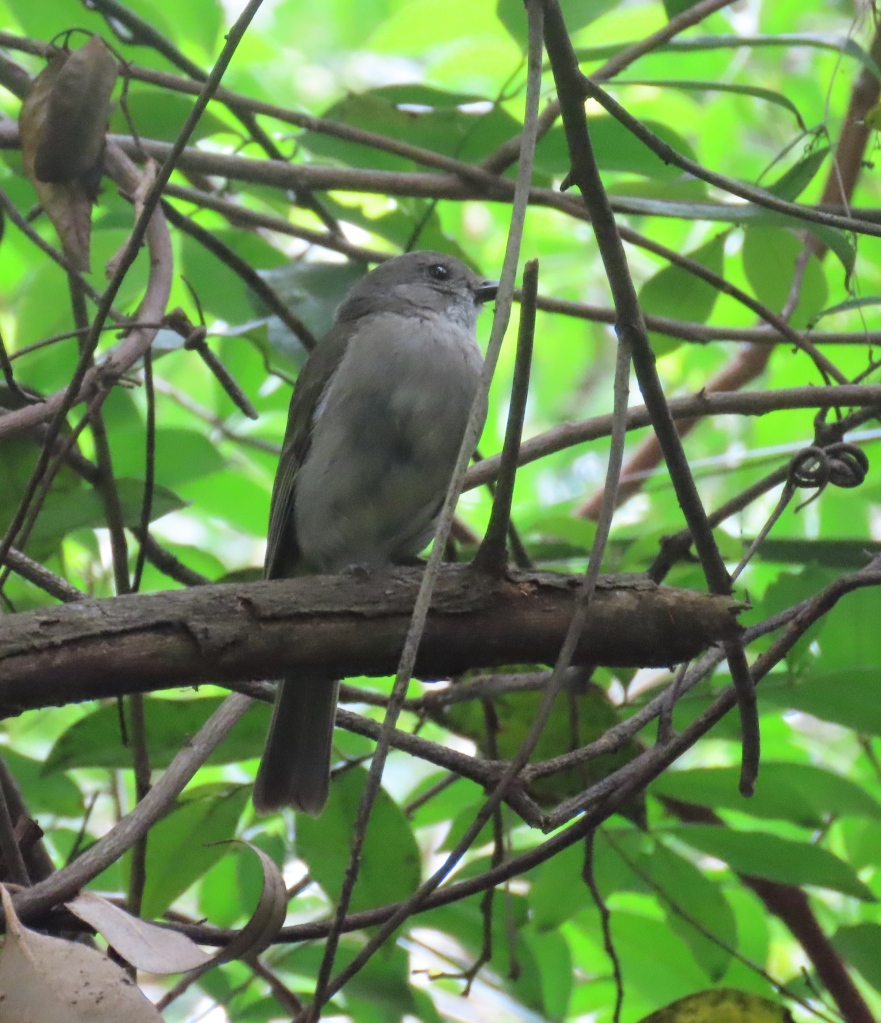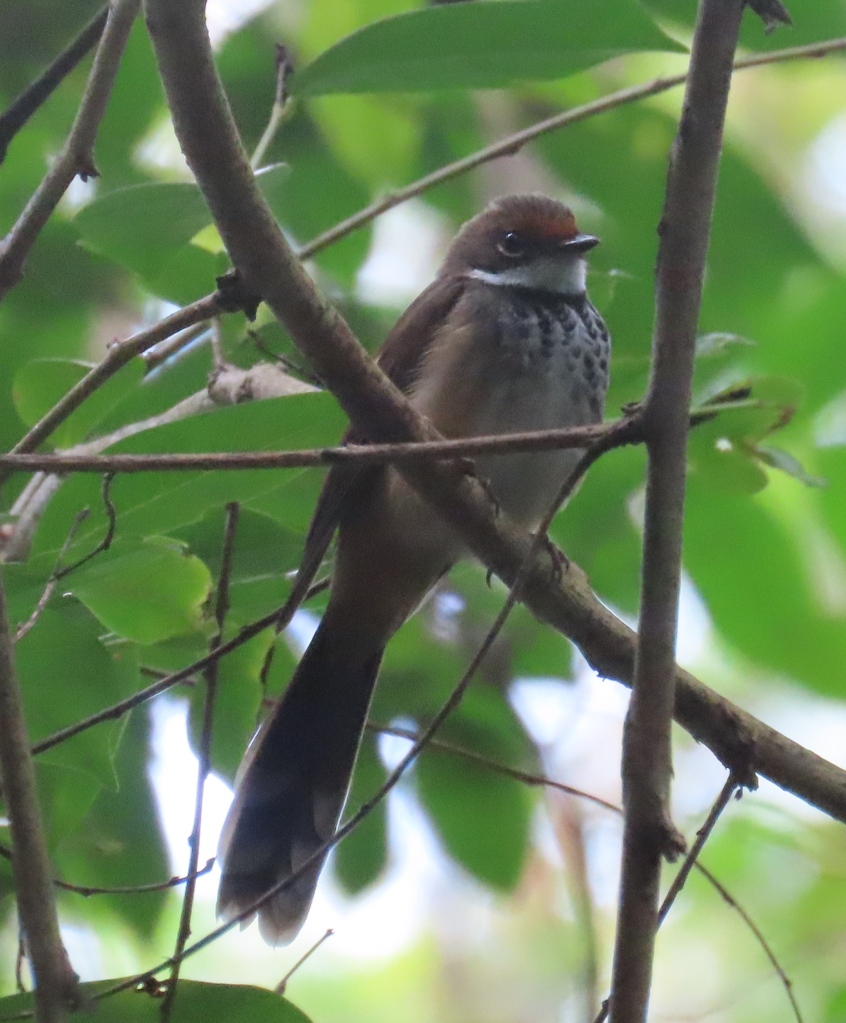Blog Archives
Another White-plumed Honeyeater
This is my second-ever White-plumed Honeyeater, spotted this time in Denman NSW, about three hours’ drive north west of my usual haunts on the east coast of Australia. The picture shows nicely the white stripe that gives the bird the name “white-plumed”. As I remarked when posting my first sighting of a White-plumed Honeyeater, I’d expect a grander plume to match the name. Something along the lines of an ostrich’s tail feathers, perhaps!
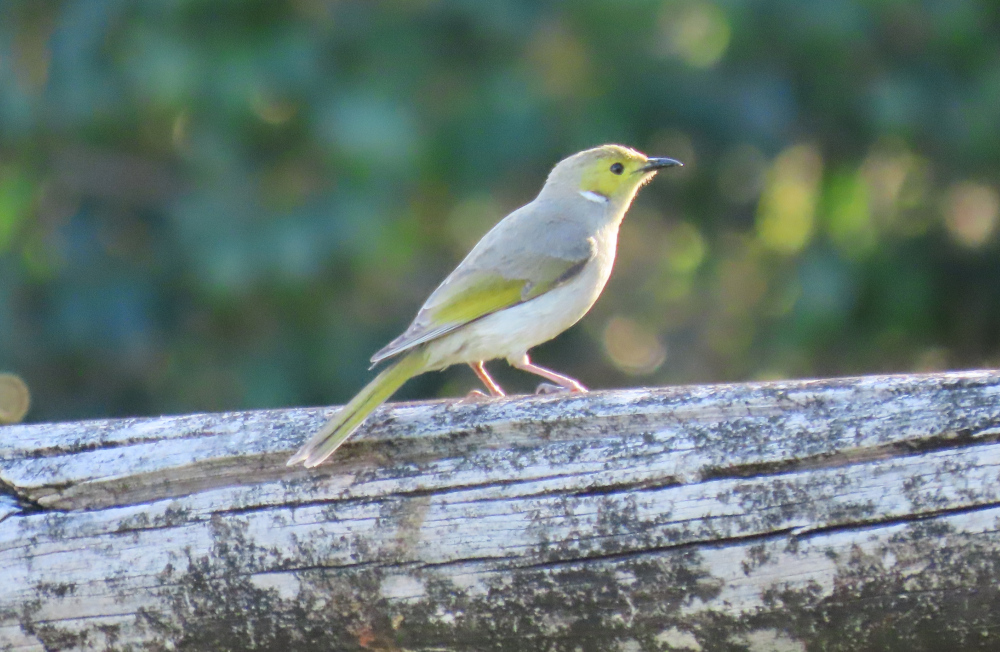
Common name: White-plumed Honeyeater
Scientific name: Lichenostomus penicillatus
Approximate length: 15-17 cm
Date spotted: 12 September 2025 (spring)
Location: Denman, NSW, Australia: 32°23’35.5″S 150°41’08.9″E
My first White-plumed Honeyeater
White-plumed Honeyeaters are common and wide-spread, according to my bird book, but this is the first one I’ve identified. I spotted it at Mary Flynn Campground on the Turon River in New South Wales. It’s an unassuming little bird, with plumage of soft greys and yellows, and quite large eyes relatively speaking.
In the photo, below the yellow face, you can just make out the white stripe that gives the bird the name “white-plumed”. Personally, I’d expected a grander plume to match the name, but there you go.

Common name: White-plumed Honeyeater
Scientific name: Lichenostomus penicillatus
Approximate length: 15-17 cm
Date spotted: 17 May 2025 (autumn)
Location: Mary Flynn Campground on the Turon River, NSW, Australia: 33°04’46.6″S 149°23’55.6″E
Lewin’s Honeyeater, dark green and yellow
I watched this little honeyeater for a while, but it was adept at keeping parts of itself hidden. Still, I got a shot of the bird drinking from some bell flowers:

The bird is overall quite dark in colour, with olive-green back and wings and a dark head. A light yellow streak runs alongside its beak — I think this is called the gape. Behind the eye is a yellow tuft covering the bird’s ear.
Here’s a photo from a slightly different angle:

This is only the second time I’ve spotted a Lewin’s Honeyeater. The other one was nearby, just over a year ago (June 2023).
Common name: Lewin’s Honeyeater
Scientific name: Meliphaga lewinii
Approximate length: 19-22 cm
Date spotted: 15 August 2024 (winter)
Location: Just outside Manly Dam Reserve, New South Wales, Australia: 33°46’55.6″S 151°15’26.9″E
Brown Honeyeater at Maleny
A little Brown Honeyeater was feeding on flowers at the botanical gardens in Maleny, Queensland. Brown Honeyeaters are rather drab little birds, and I didn’t get a good photo of this one. But it’s worth posting as a first sighting:

These little birds are very similar to Fuscous Honeyeaters. I identified this one with the help of the Australian Birds sub-Reddit. This bird doesn’t have the yellow patch on the neck that Fuscous Honeyeaters have. And this bird’s beak is more curved than the Fuscous beak. The next photo shows the curved beak, albeit on the other side of a twig!
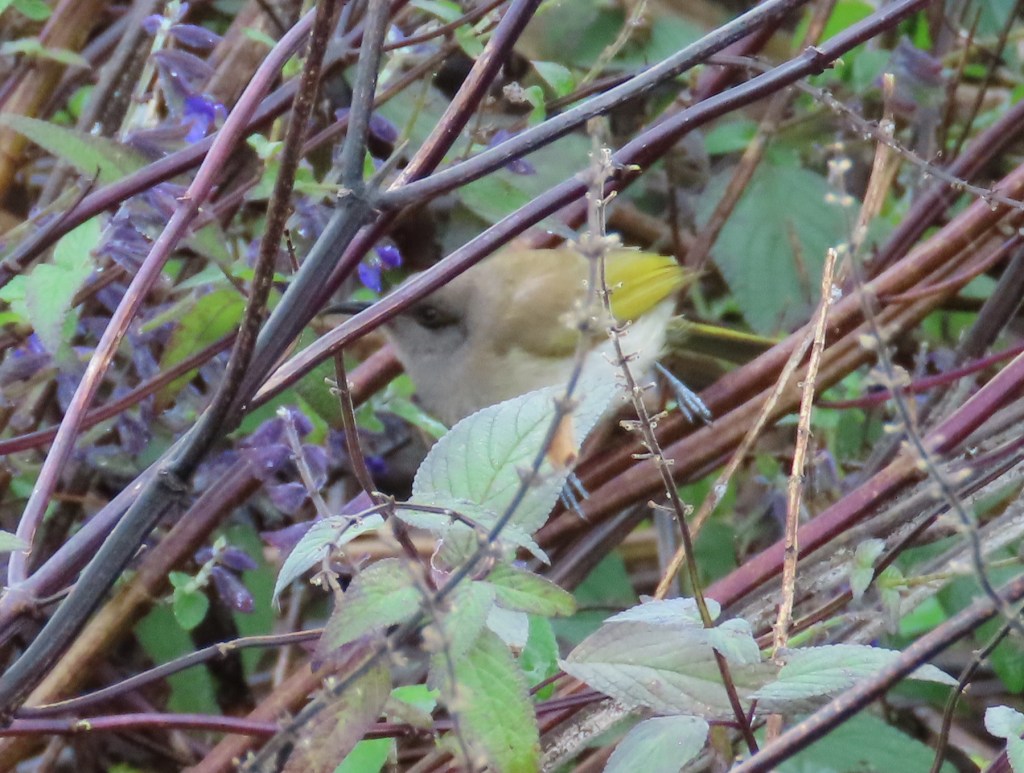
There’s also a hint of yellow at the edge of the eye, as well as that lovely dark eye mask:
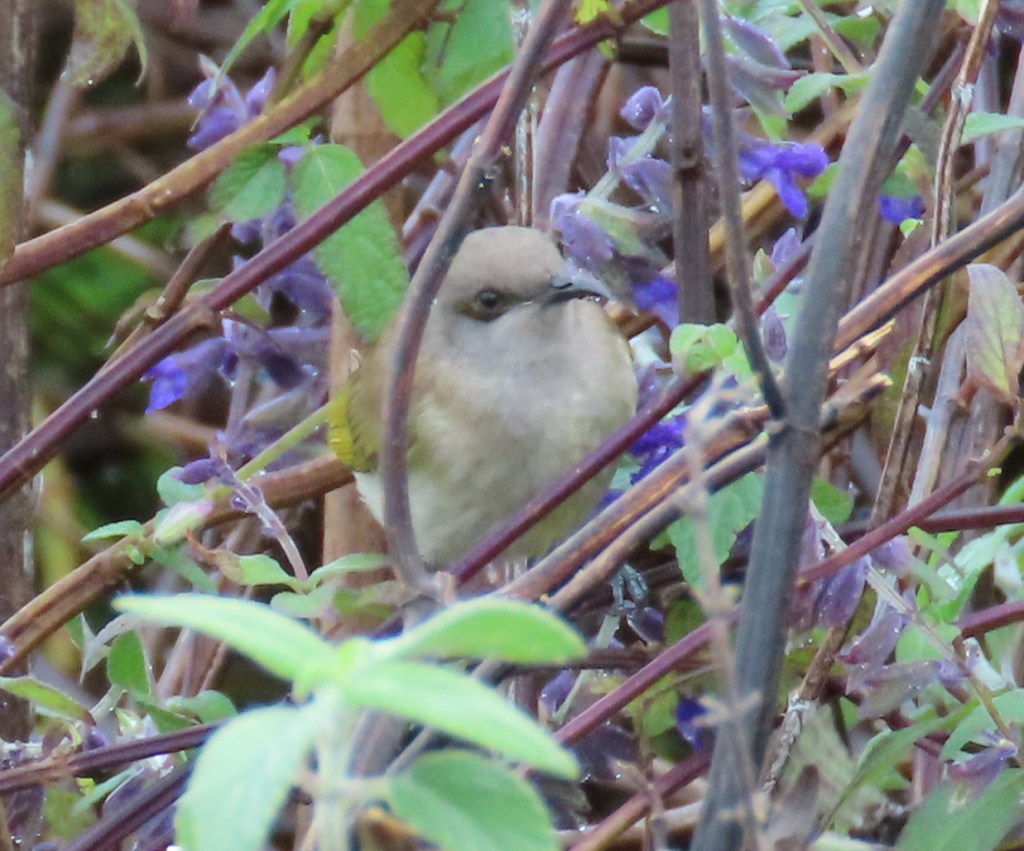
Common name: Brown Honeyeater
Scientific name: Lichmera indistincta
Length: 12-16 cm
Date spotted: 6 July 2024 (winter)
Location: Maleny Botanic Gardens, Queensland: 26°46’54.7″S 152°50’04.0″E
Young Scarlet Honeyeater
It took me a while to identify this bird. The long, thin, curved beak made me think of a honeyeater or a spinebill. I’d seen Scarlet Honeyeaters in the area before, and this bird was the right sort of size and shape to be one of those. But it has no red around its head or throat, and its legs are orange instead of grey.
It’s a young Scarlet Honeyeater:

I’ve posted some pictures of previously-spotted Scarlet Honeyeaters, where you can see the lovely reds of the adult birds.
There’s a small hint of red on the back, just above the tail:

This is the view the bird was enjoying:

Common name: Scarlet Honeyeater
Scientific name: Myzomela sanguinolenta
Approximate length: 10 cm
Date spotted: 26 June 2024 (winter)
Location: Dobroyd Head, New South Wales, Australia: 33°48’34.0″S 151°16’14.8″E
Evocative call of the Spiny-cheeked Honeyeater
This is the last of my posts from our recent trip out west into the Great Outback, and I’ve left the best to last. Like almost all my postings from this trip, this is a first sighting for me.
While I was wondering around on Mungo Lodge, on the outskirts of Lake Mungo, a beautiful, mournful whistle seemed to follow me. At first I thought a person was whistling. (There were other people taking photos in the area.)
Eventually, after ducking under the low branches of trees and taking plentiful photos and videos, I found the whistler: A Spiny-cheeked Honeyeater. Even then, I wasn’t sure, and asked for confirmation on r/AustralianBirds.
Here’s a Spiny-cheeked Honeyeater:

They’re distinctive-looking birds, with that pink line extending from the beak under the eye, a pale blue eye, and a cinnamon-yellow chest.
This video is a bit shaky, but shows one of the birds singing. The call that particularly struck me is the five-note, falling whistle, at 13 seconds into the video and then again at 25 seconds:
In the next video, it’s not as clear which birds are making the call, but there are some nice instances of the call itself, especially from 32 seconds into the video:
Another still shot of one of the birds:

Common name: Spiny-cheeked Honeyeater
Scientific name: Acanthagenys rufogularis
Approximate length: 23-26 cm
Date spotted: 20-21 May 2024 (autumn)
Location: Mungo Lodge, Mungo National Park, New South Wales, Australia: 33°44’31.4″S 143°00’06.1″E
New Holland Honeyeater drinking from Mountain Devil flower
New Holland Honeyeaters are small birds that feed on nectar from flowers, as well as small insects. This video shows one of them drinking from the red, cup-shaped flower of a Mountain Devil bush (Lambertia formosa).
New Holland Honeyeaters are just one of the many types of birds labelled honeyeaters in Australia. It’s a varied and raucous group!
I did take a still photo of the bird, but it’s a bit fuzzy due to the early morning dimness:
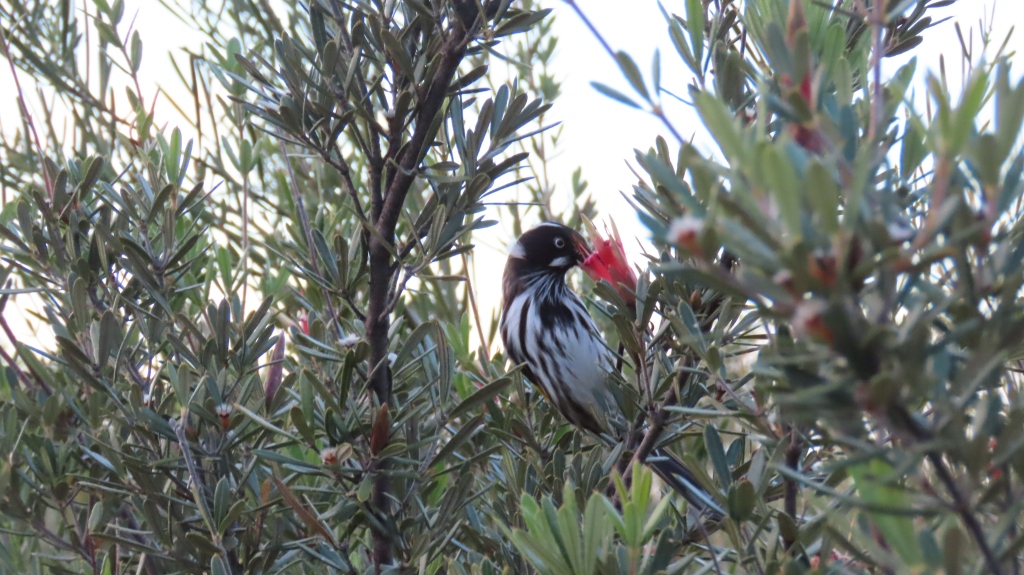
After watching the bird a while, I walked further along the path and took a photo looking back the way I’d come. The bird was at the very end of the path in this picture, near the water. In the distance are the two headlands that form the mouth of Sydney Harbour:
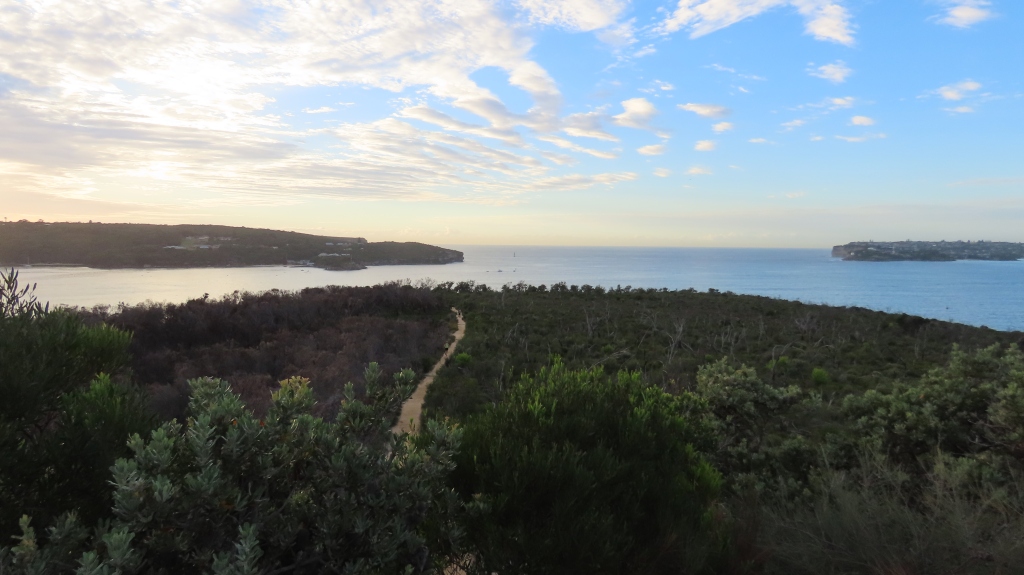
Common name: New Holland Honeyeater
Scientific name: Phylidonyris novaehollandiae
Approximate length: 17-19 cm
Date spotted: 23 March 2024 (summer)
Location: Dobroyd Head, New South Wales, Australia: 33°48’38.0″S 151°16’24.3″E
Blue-faced Honeyeater: my first sighting
It’s always exciting to see a bird species for the first time. Yesterday I saw my first Blue-faced Honeyeater. There were two of them in a Red Bottlebrush (Callistemon) bush, one an adult and the other a juvenile.
This bird is an adult — you can tell by the fact that the patch of skin around its eye is entirely blue (rather than green):
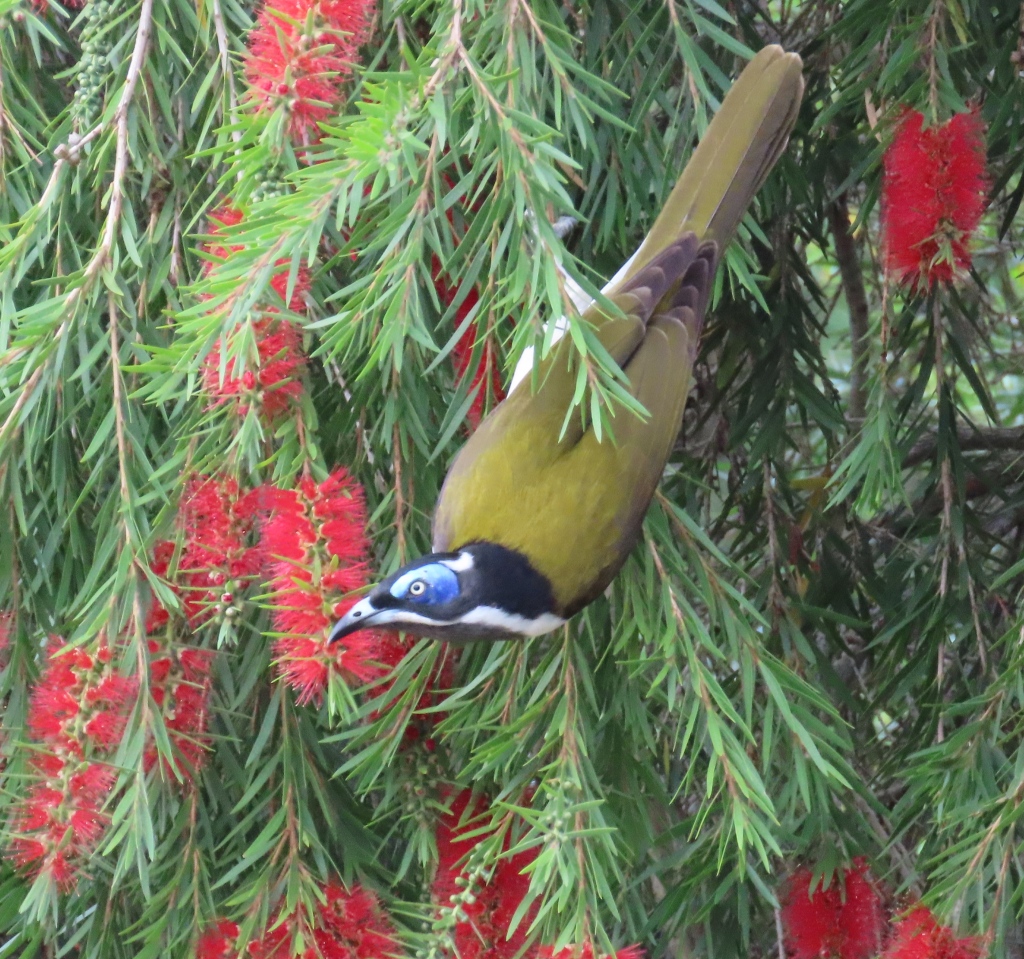
This is the youngster — the skin around the eye is mostly green, but already changing to blue:
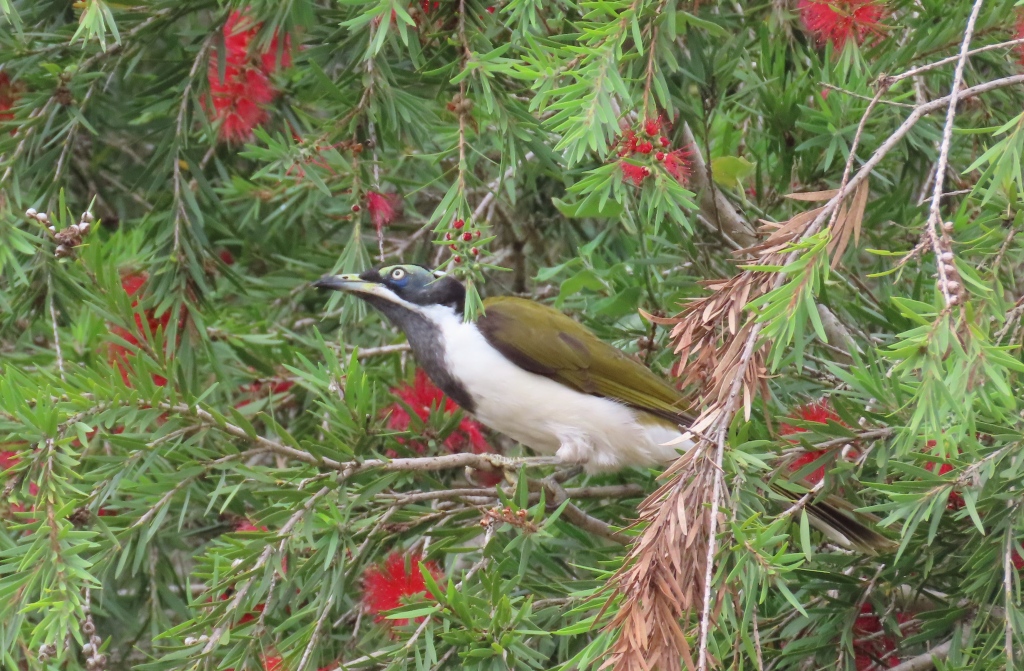
Blue-faced Honeyeaters are larger than most other honeyeaters that I’ve seen. Like most honeyeaters, they make quite a noise! It was their enthusiastic cackles and comments that drew me to the bush where they were feeding on nectar.
Here’s another view of the youngster, showing the two white bands that extend from the eye patches and almost meet at the back of the head:
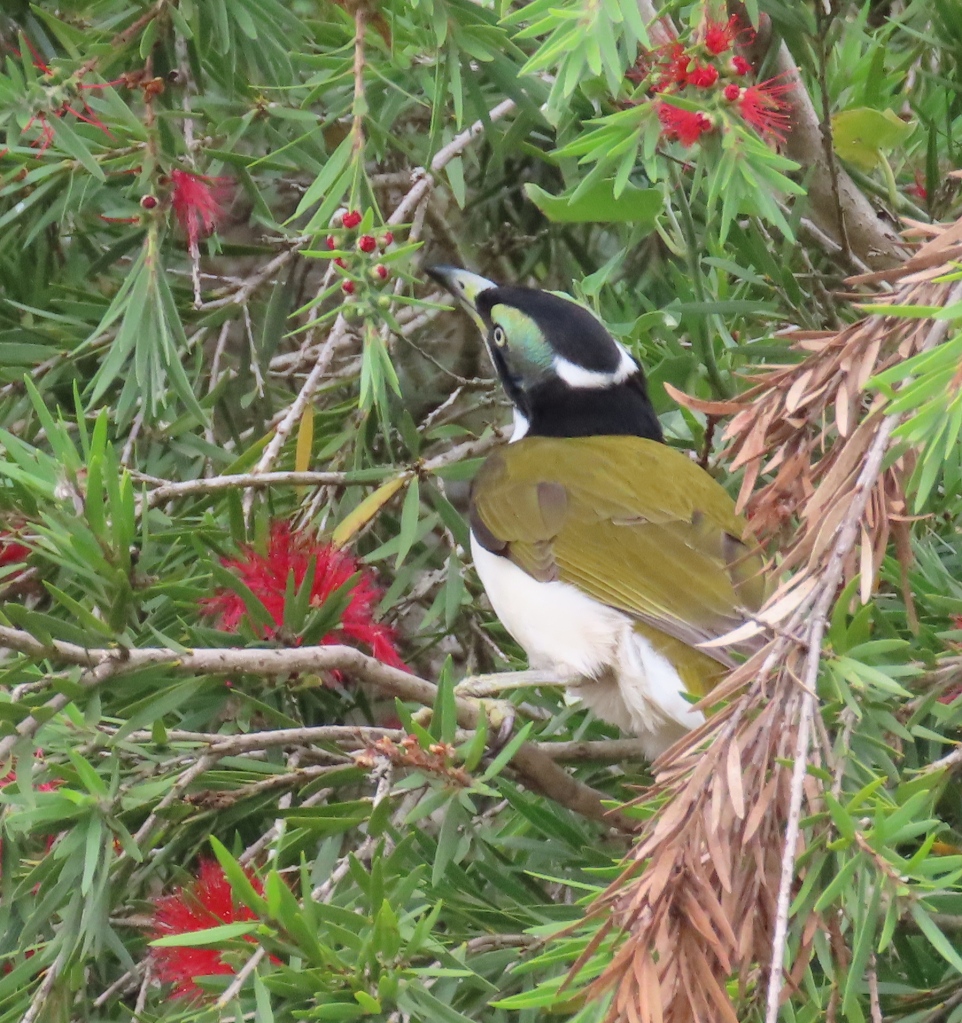
Both birds have a lovely olive-green back and a white front with an extended black bib.
Here’s the adult again:
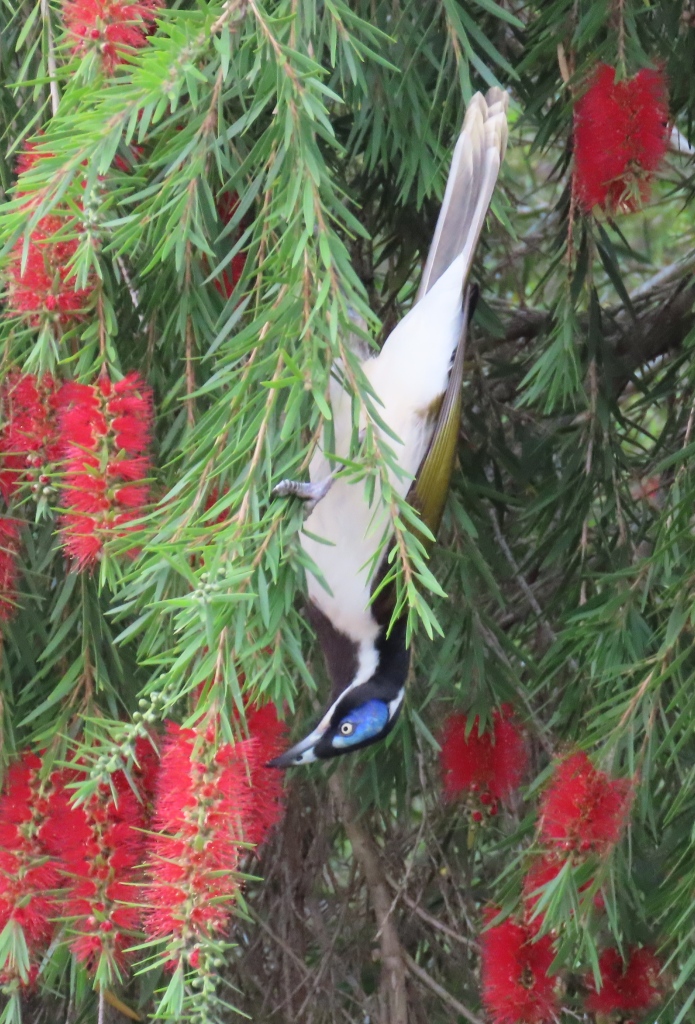
In the next photo, the bird has twisted its neck up to take a look at me. Well, hello there:
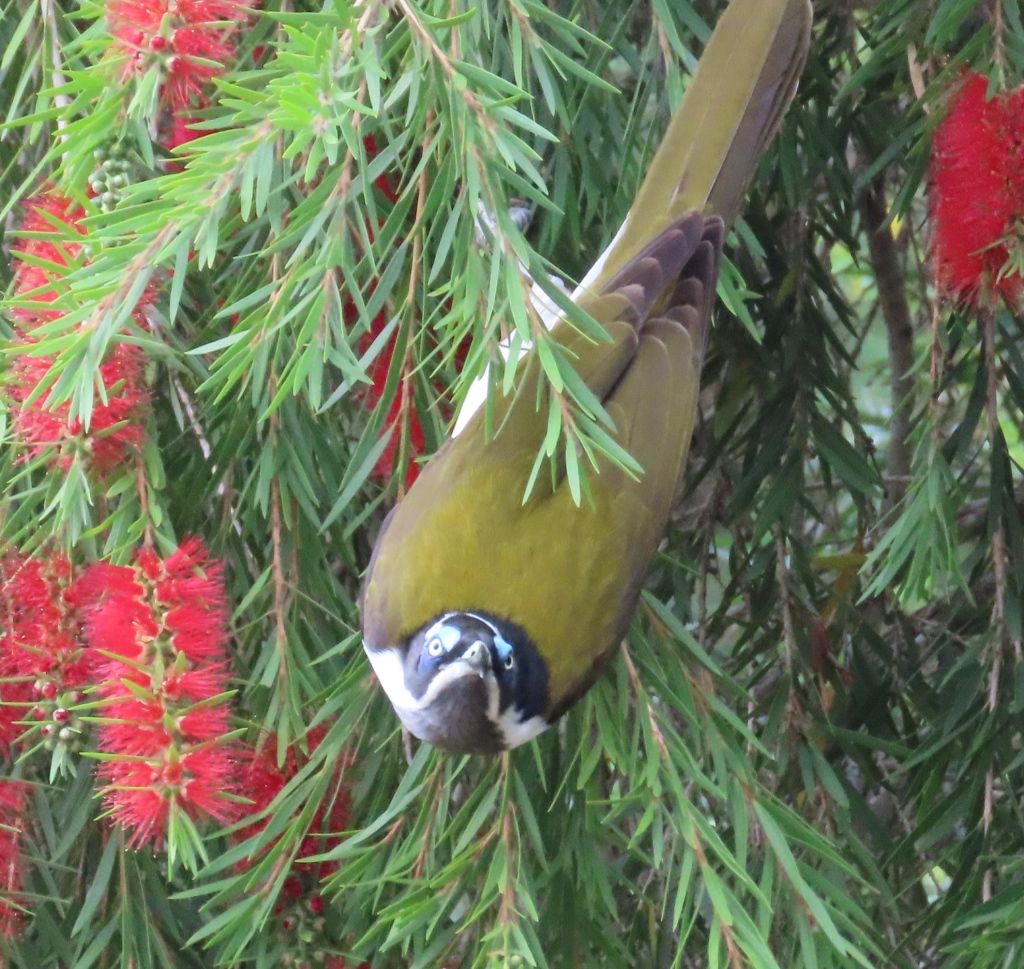
The last picture shows that white band on the head again:
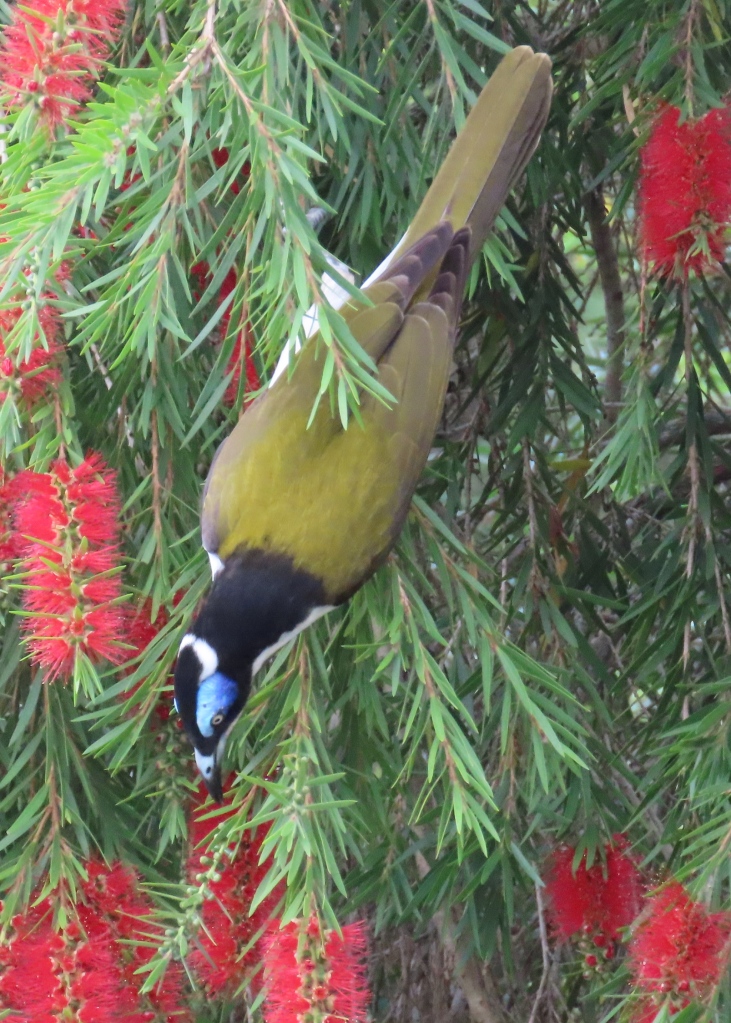
Common name: Blue-faced Honeyeater
Scientific name: Entomyzon cyanotis
Approximate length: 25-31 cm.
Date spotted: 3 March 2024 (summer)
Location: Laguna, New South Wales, Australia: 32°59’25.4″S 151°07’52.8″E
Little Wattlebird on Old Man Banksia
In the early morning light, this Little Wattlebird sits among the sunlit leaves of an Old Man Banksia tree.
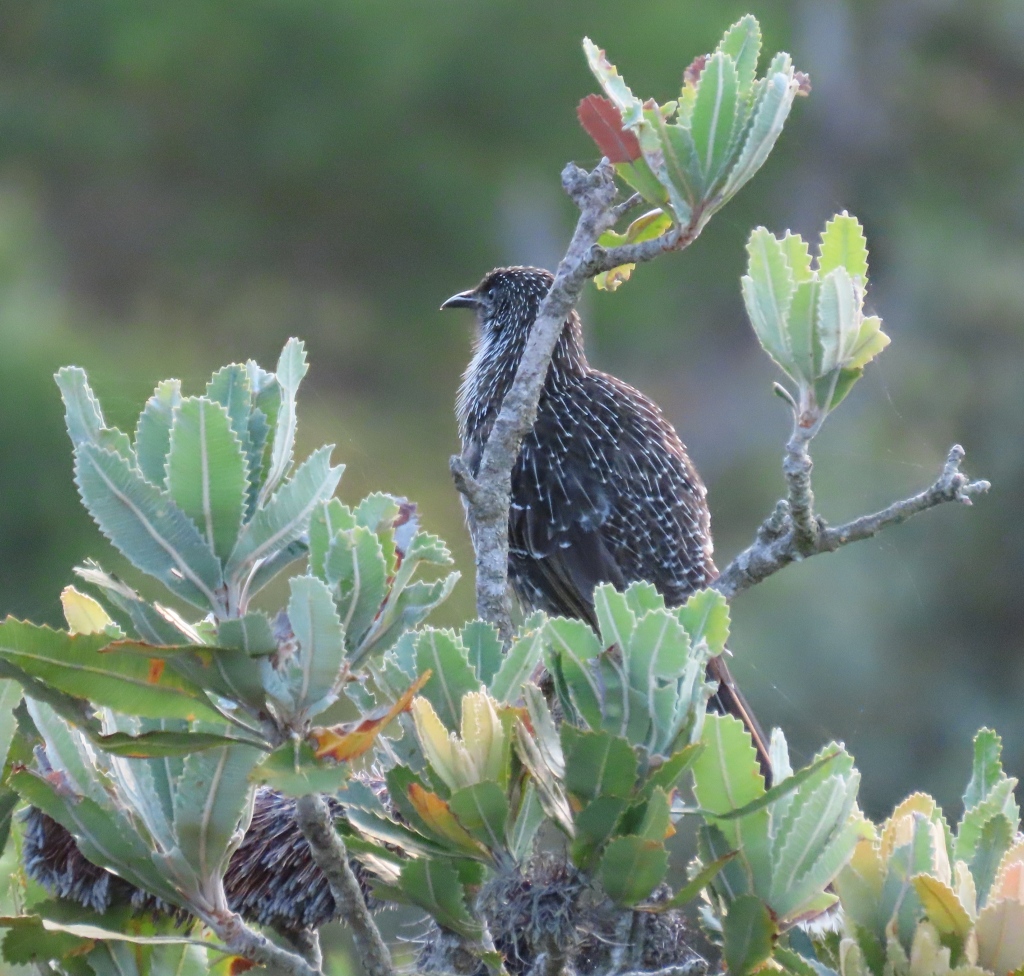
Common name: Little Wattlebird
Scientific name: Anthochaera chrysoptera
Approximate length: 30 cm
Date spotted: 17 February 2024 (summer)
Location: Dobroyd Head Track, Balgowlah, New South Wales, Australia: 33°48’33.2″S 151°16’14.1″E










